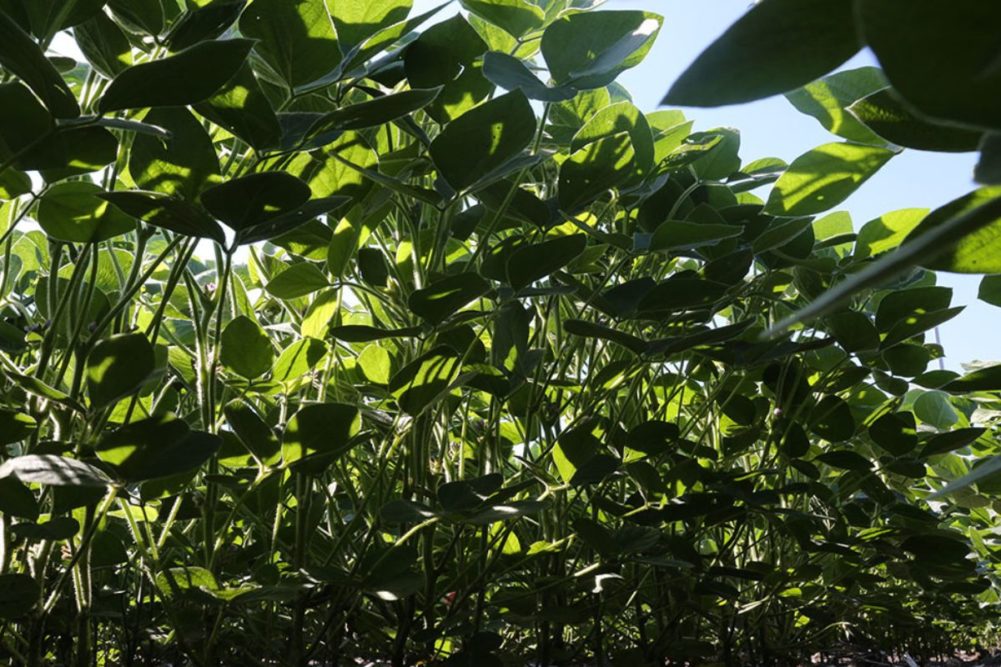CHAMPAIGN, ILLINOIS, US — After more than a decade of study, Realizing Increased Photosynthetic Efficiency (RIPE), an international research team led by the University of Illinois, has proven in field trials that multigene bioengineering of photosynthesis increases soybean yield by more than 20% without loss of quality, RIPE said.
“The number of people affected by food insufficiency continues to grow, and projections clearly show that there needs to be a change at the food supply level to change the trajectory,” said Amanda De Souza, RIPE project research scientist and lead author. “Our research shows an effective way to contribute to food security for the people who need it most while avoiding more land being put into production. Improving photosynthesis is a major opportunity to gain the needed jump in yield potential.”
According to UNICEF, by 2030, more than 660 million people are expected to face food scarcity and malnutrition. Two of the major causes of this are inefficient food supply chains (access to food) and harsher growing conditions for crops due to climate change. Improving access to food and improving the sustainability of food crops in impoverished areas are the key goals of this study and the RIPE project.
RIPE researchers have been working to improve photosynthesis, the natural process all plants use to convert sunlight into energy and yield, for more than a decade. In this first-of-its-kind work, recently published in Science, the group improved the VPZ construct within the soybean plant to improve photosynthesis and then conducted field trials to see if yield would improve as a result.
The VPZ construct contains three genes that code for proteins of the xanthophyll cycle, which is a pigment cycle that helps in the photoprotection of the plants. Once in full sunlight, this cycle is activated in the leaves to protect them from damage, allowing leaves to dissipate the excess energy. However, when the leaves are shaded (by other leaves, clouds, or the sun moving in the sky) this photoprotection needs to switch off so the leaves can continue the photosynthesis process with a reserve of sunlight. It takes several minutes for the plant to switch off the protective mechanism, costing plants valuable time that could have been used for photosynthesis.
The overexpression of the three genes from the VPZ construct accelerates the process, so every time a leaf transitions from light to shade the photoprotection switches off faster. Leaves gain extra minutes of photosynthesis which, when added up throughout the entire growing season, increases the total photosynthetic rate. This research has shown that despite achieving a more than 20% increase in yield, seed quality was not affected.
“Despite higher yield, seed protein content was unchanged,” said Stephen Long, RIPE director and Ikenberry Endowed University Chair of Crop Sciences and Plant Biology at Illinois’ Carl R. Woese Institute for Genomic Biology. “This suggests some of the extra energy gained from improved photosynthesis was likely diverted to the nitrogen-fixing bacteria in the plant’s nodules.”
The researchers first tested their idea in tobacco plants because of the ease of transforming the crop’s genetics and the number of seeds that can be produced from a single plant. These factors allow researchers to go from genetic transformation to a field trial within months. Once the concept was proven in tobacco, they moved into the more complicated task of putting the genetics into a food crop, soybeans.
“Having now shown very substantial yield increases in both tobacco and soybean, two very different crops, suggests this has universal applicability,” Long said. “Our study shows that realizing yield improvements is strongly affected by the environment. It is critical to determine the repeatability of this result across environments and further improvements to ensure the environmental stability of the gain.”
Additional field tests of these transgenic soybean plants are being conducted this year, with results expected in early 2023.
“The major impact of this work is to open the roads for showing that we can bioengineer photosynthesis and improve yields to increase food production in major crops,” De Souza said. “It is the beginning of the confirmation that the ideas ingrained by the RIPE project are a successful means to improve yield in major food crops.”
RIPE is an international research project that aims to increase global food production by improving photosynthetic efficiency in food crops for smallholder farmers in Sub-Saharan Africa with support from the Bill & Melinda Gates Foundation, Foundation for Food & Agriculture Research, and UK Foreign, Commonwealth & Development Office.
RIPE is led by the University of Illinois in partnership with The Australian National University, Chinese Academy of Sciences, Commonwealth Scientific and Industrial Research Organization, Lancaster University, Louisiana State University, University of California, Berkeley, University of Cambridge, University of Essex, and US Department of Agriculture, Agricultural Research Service.





